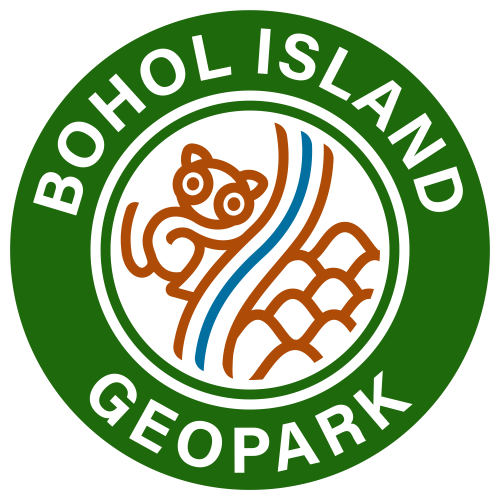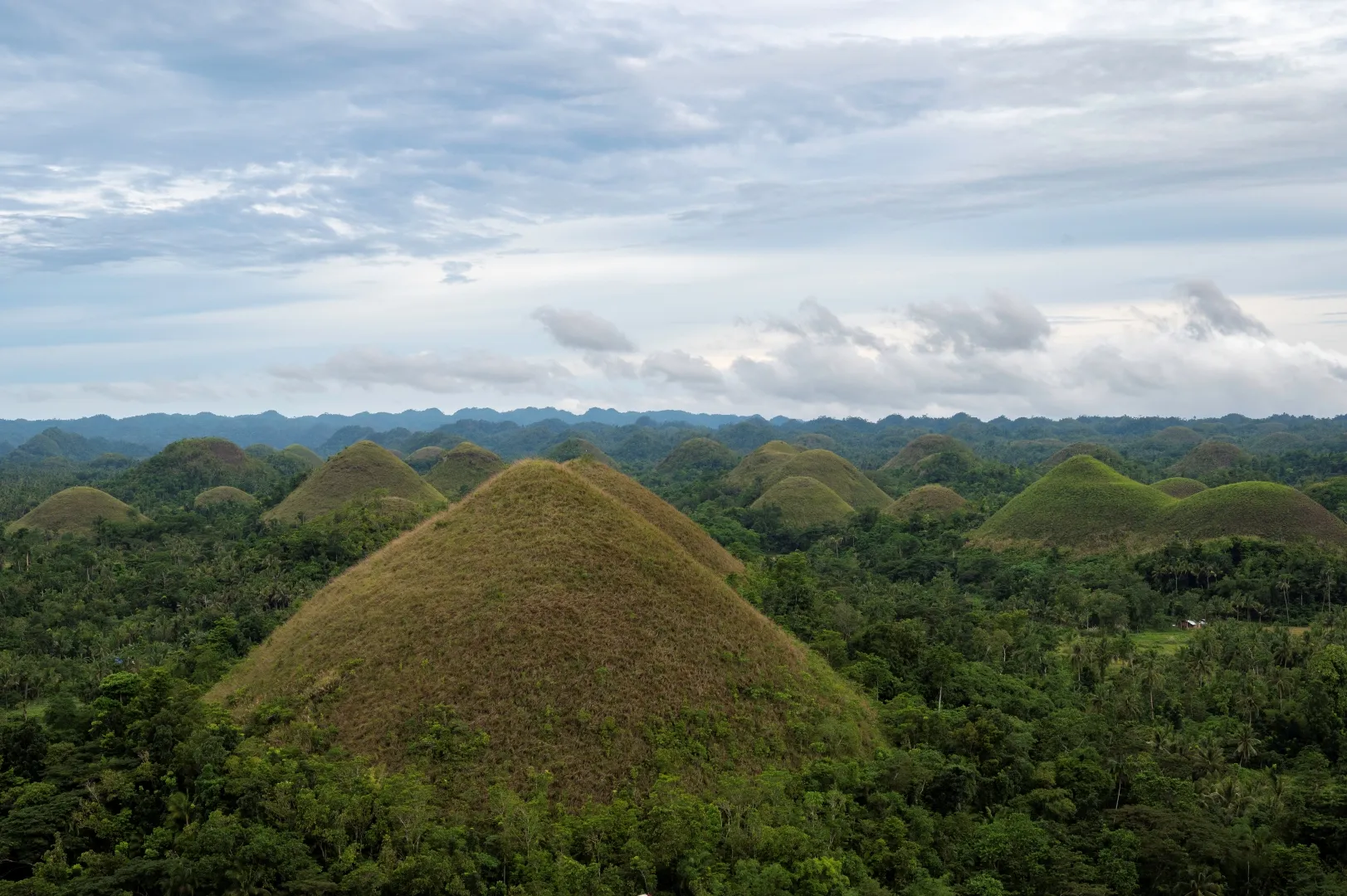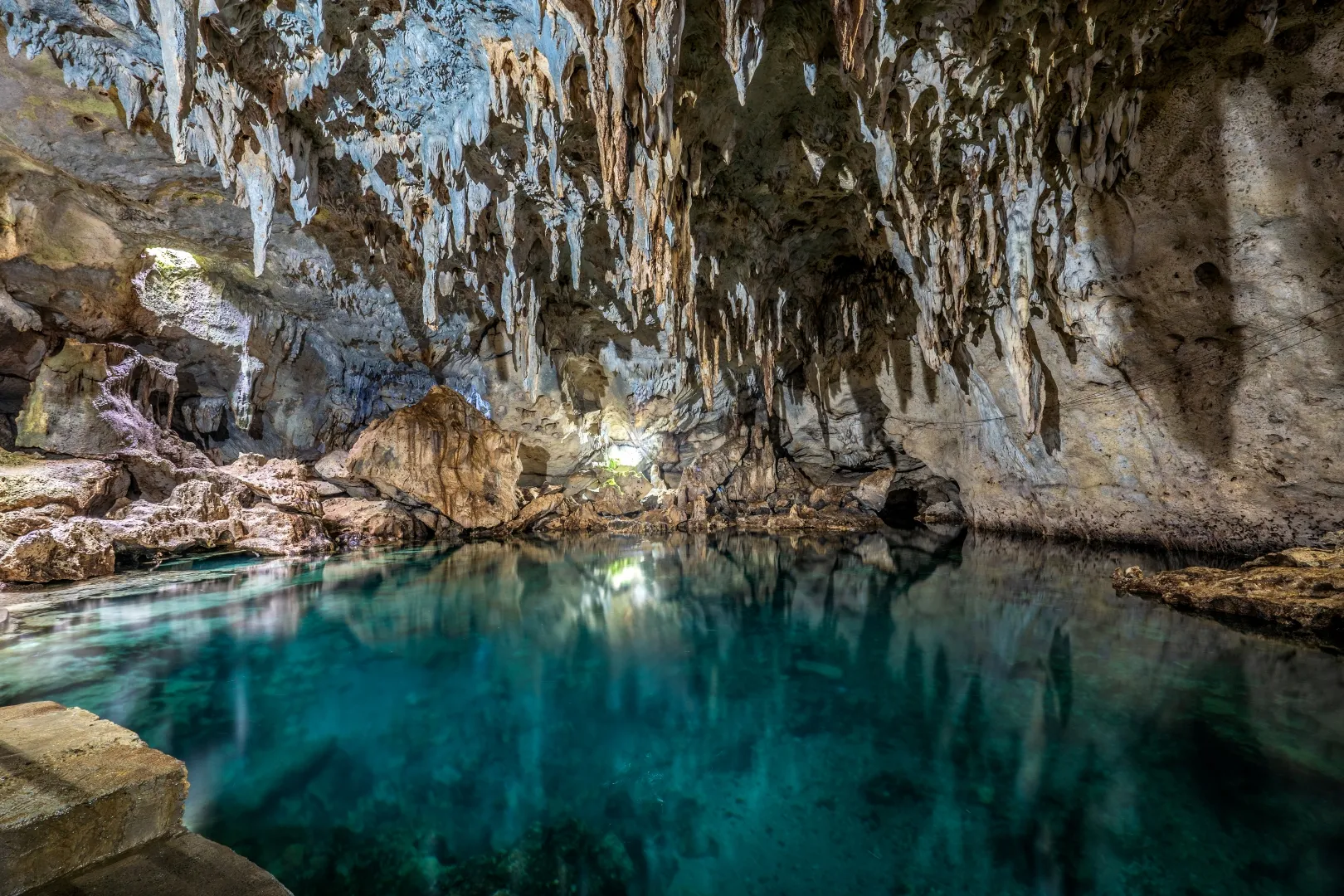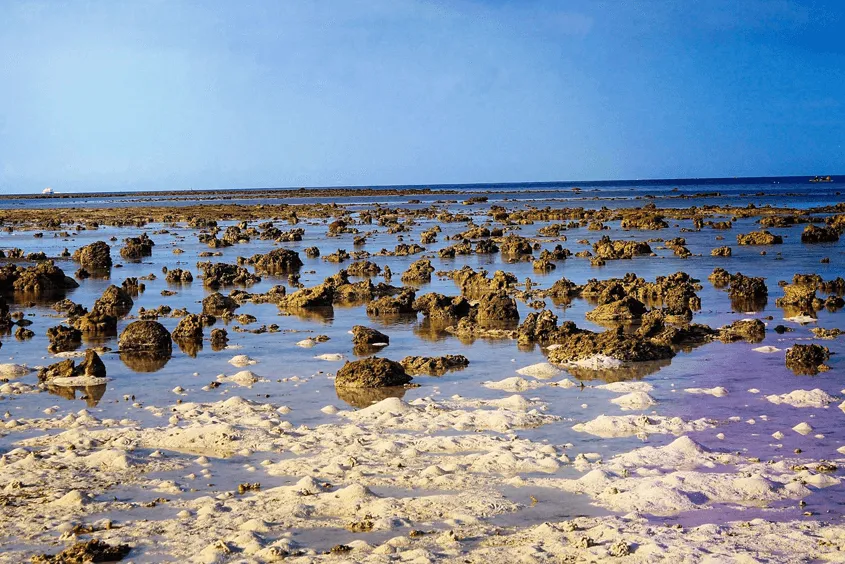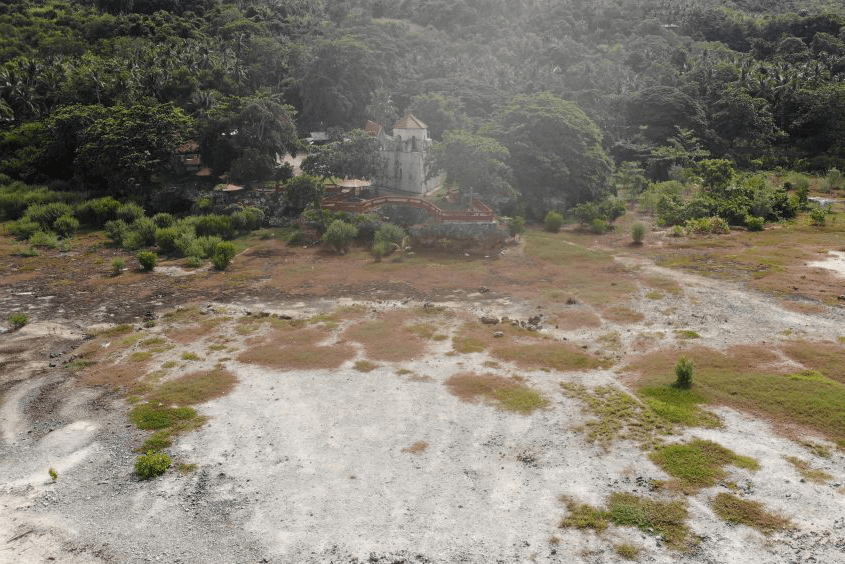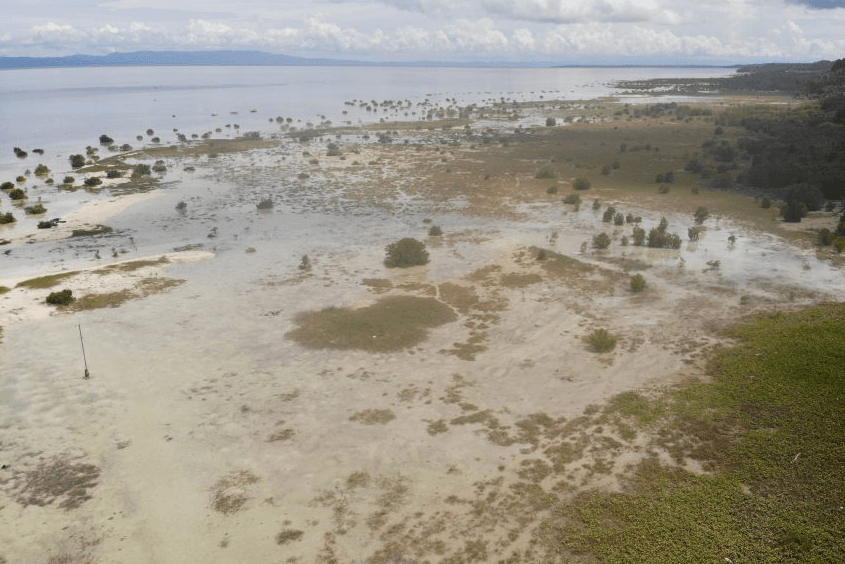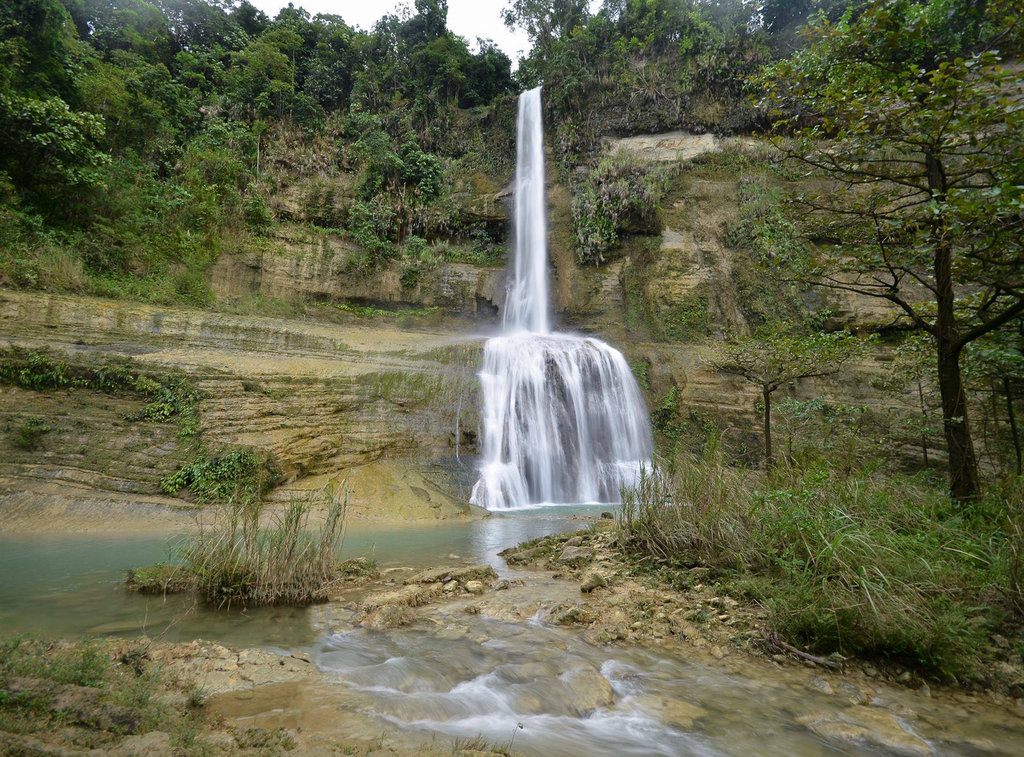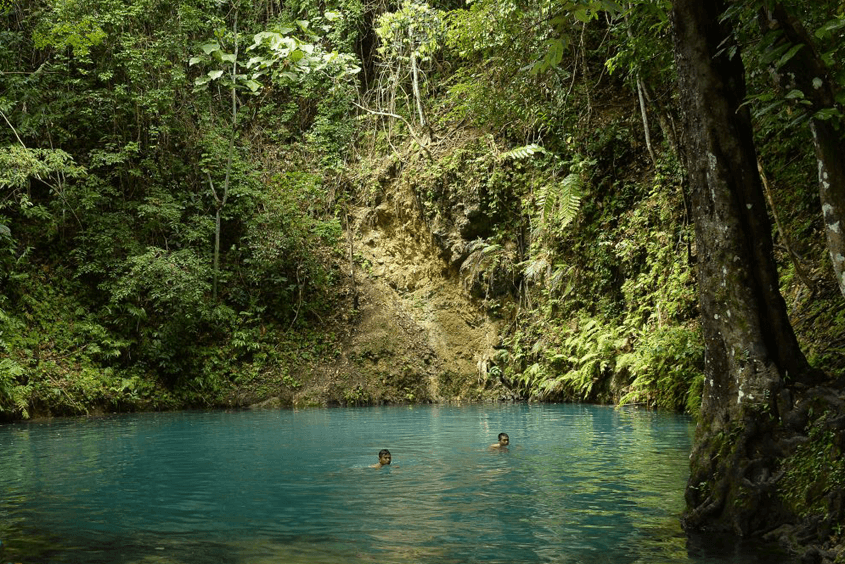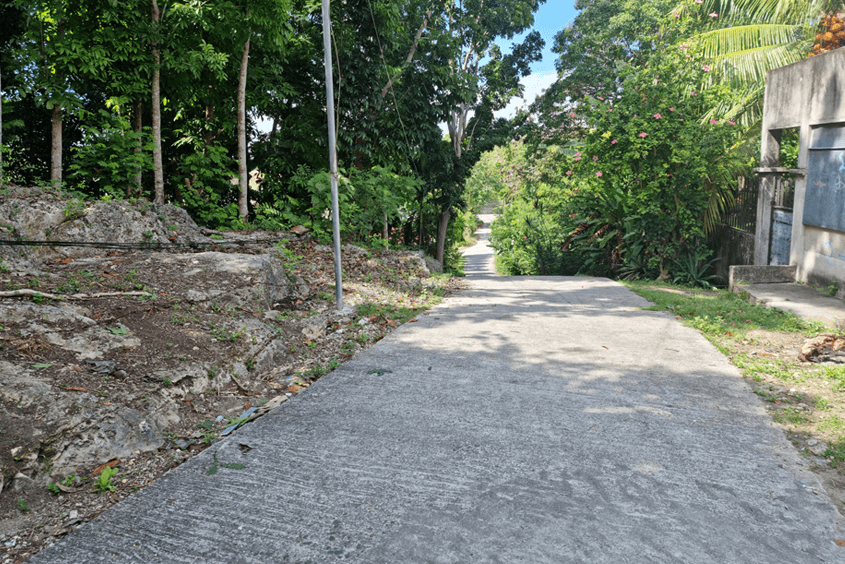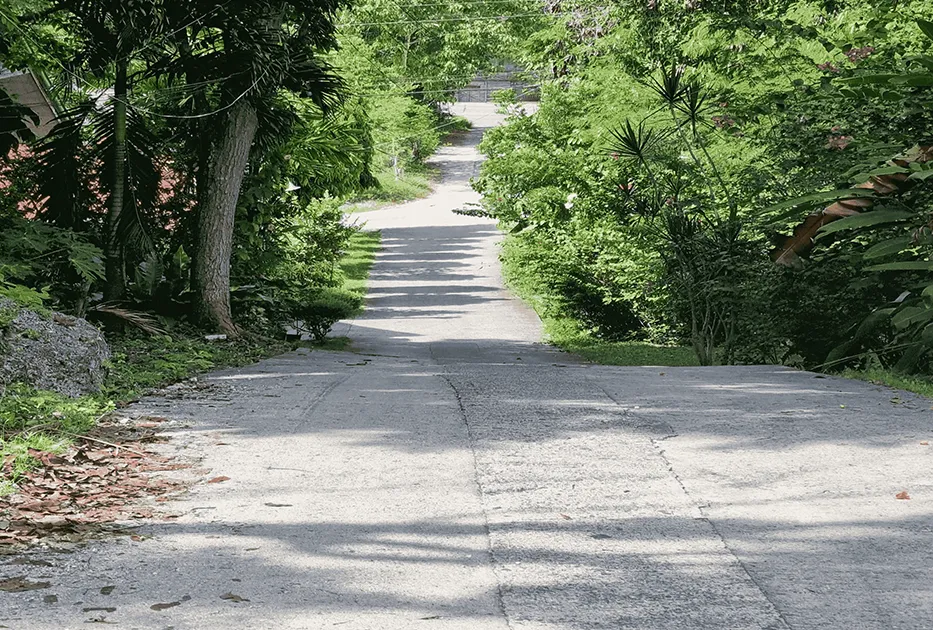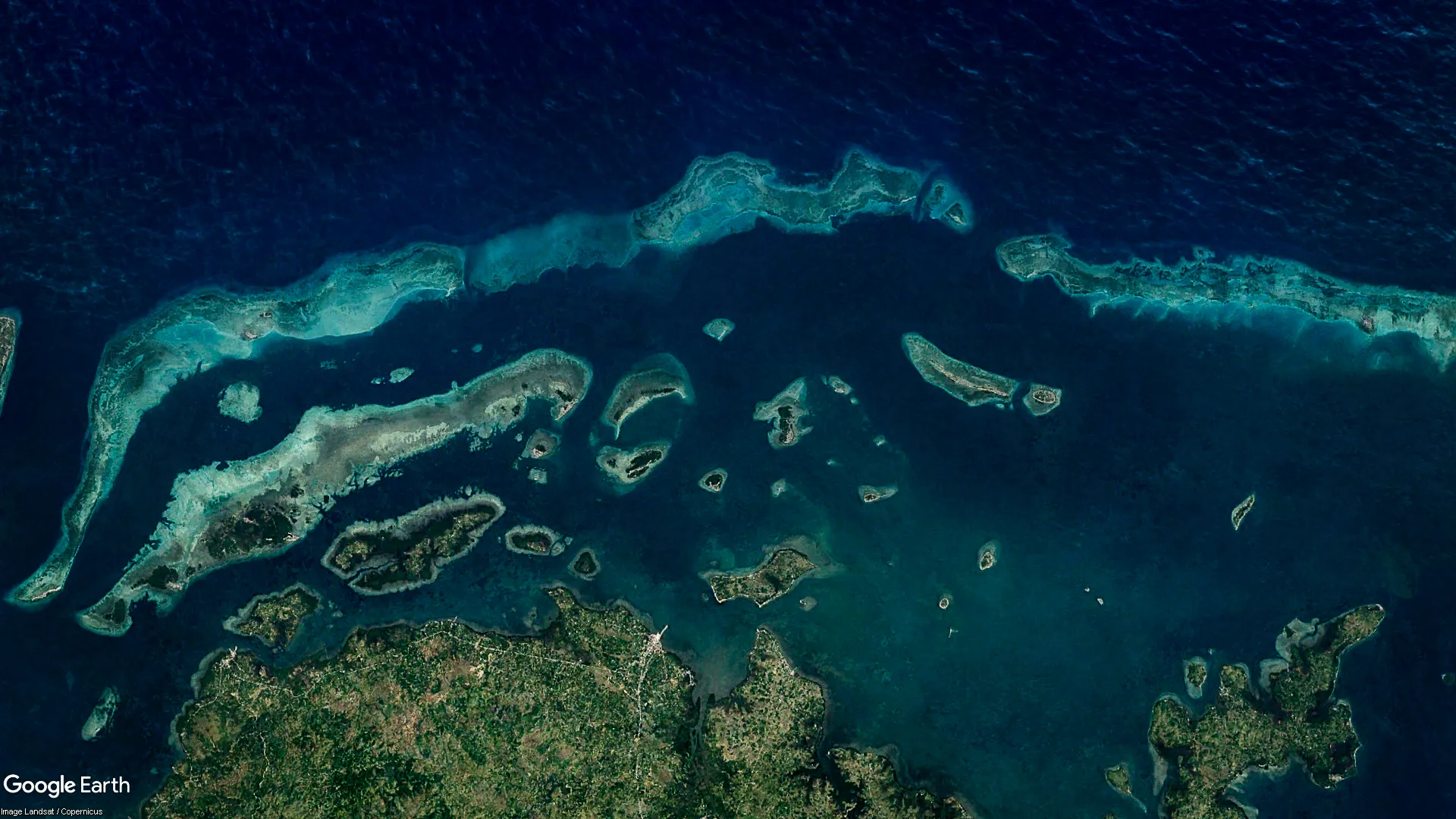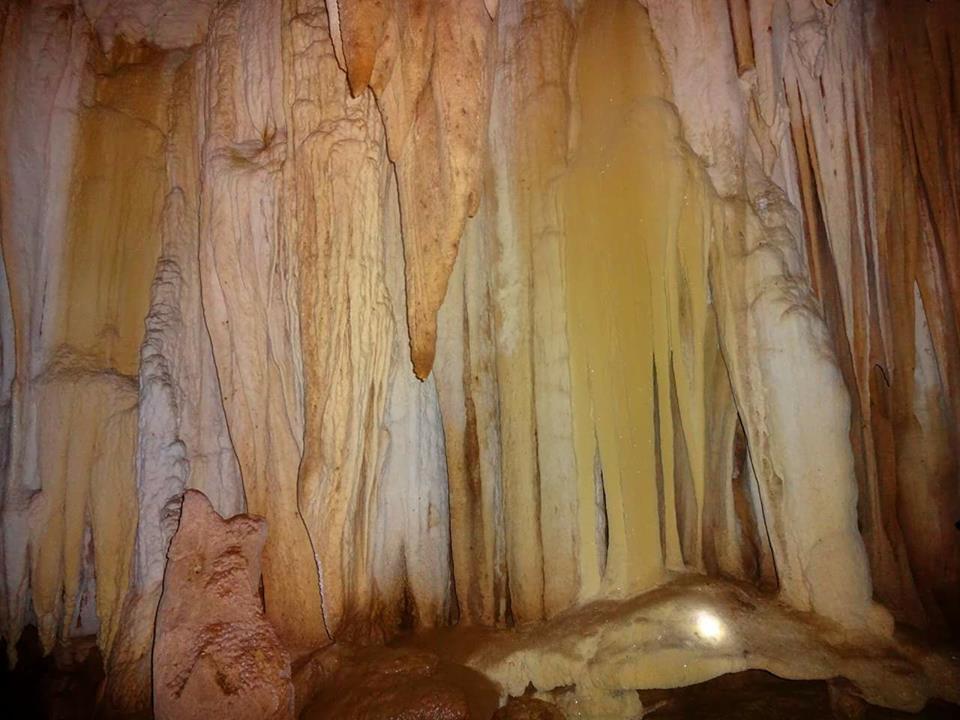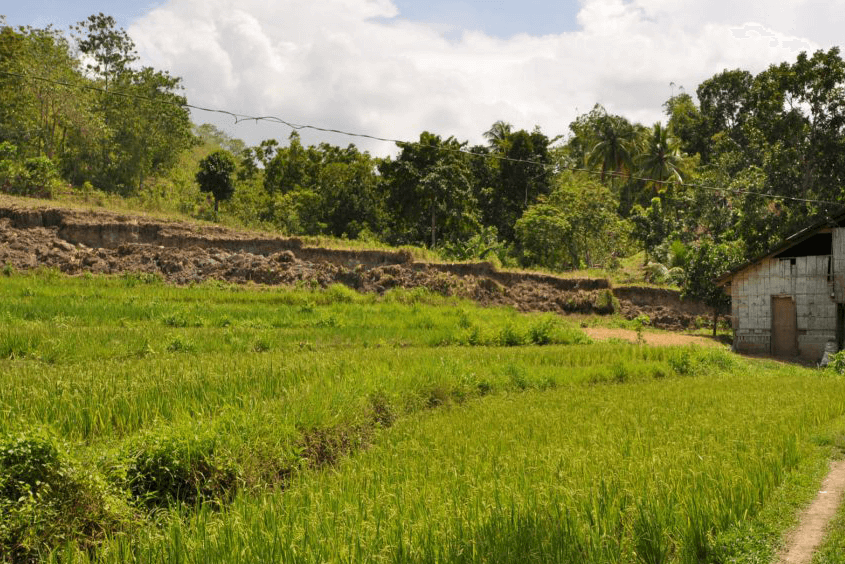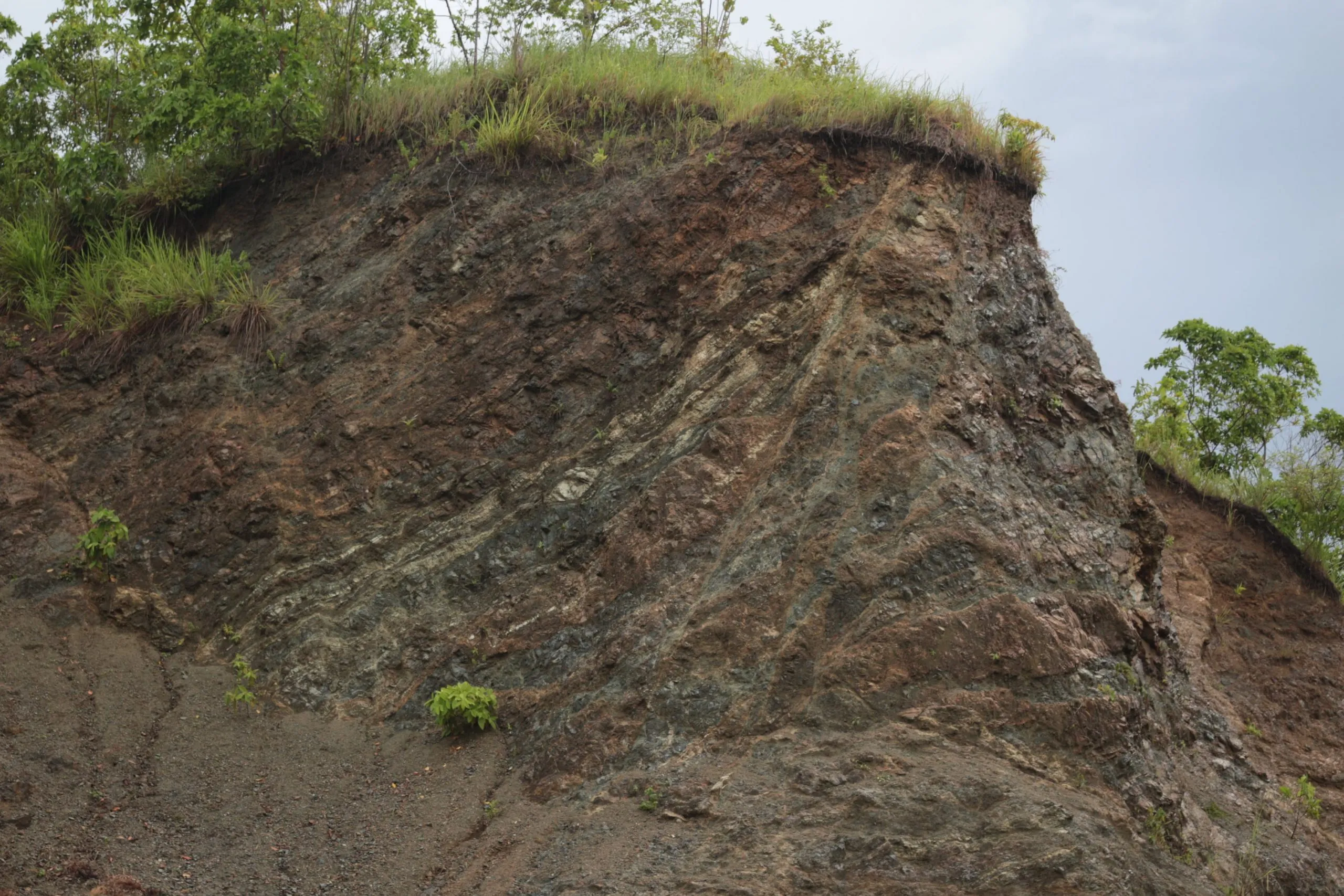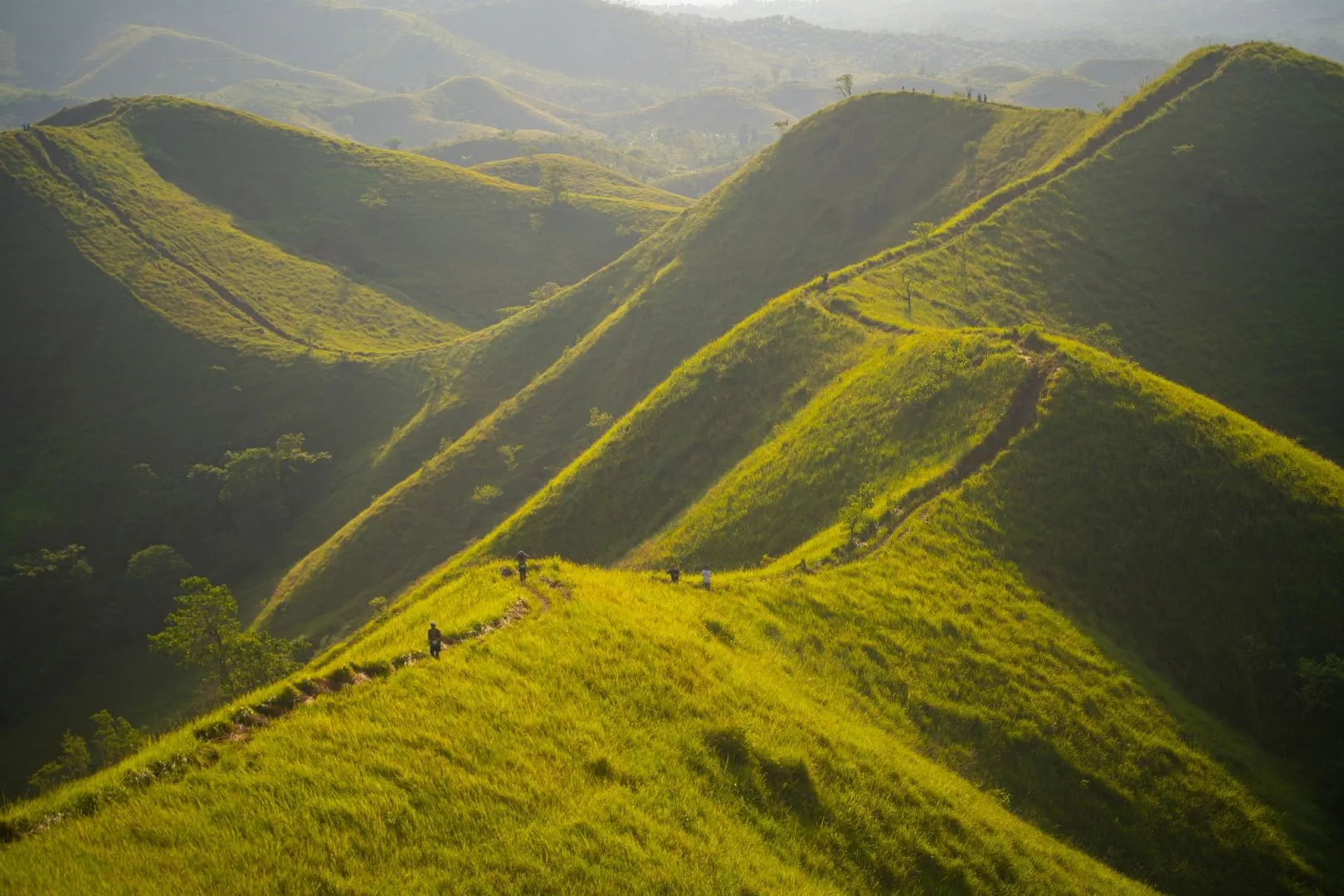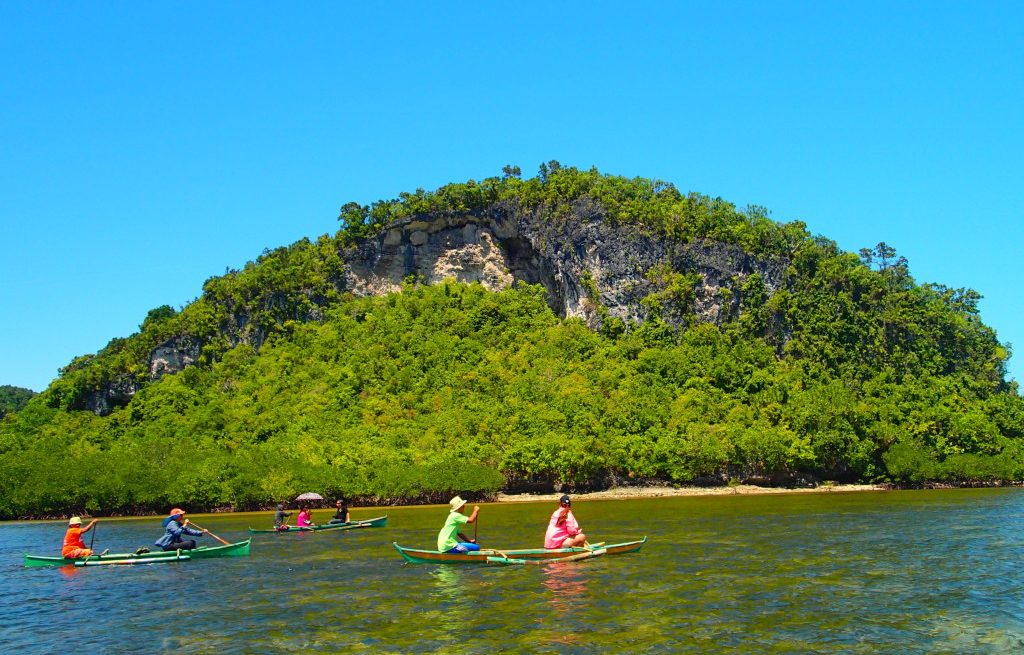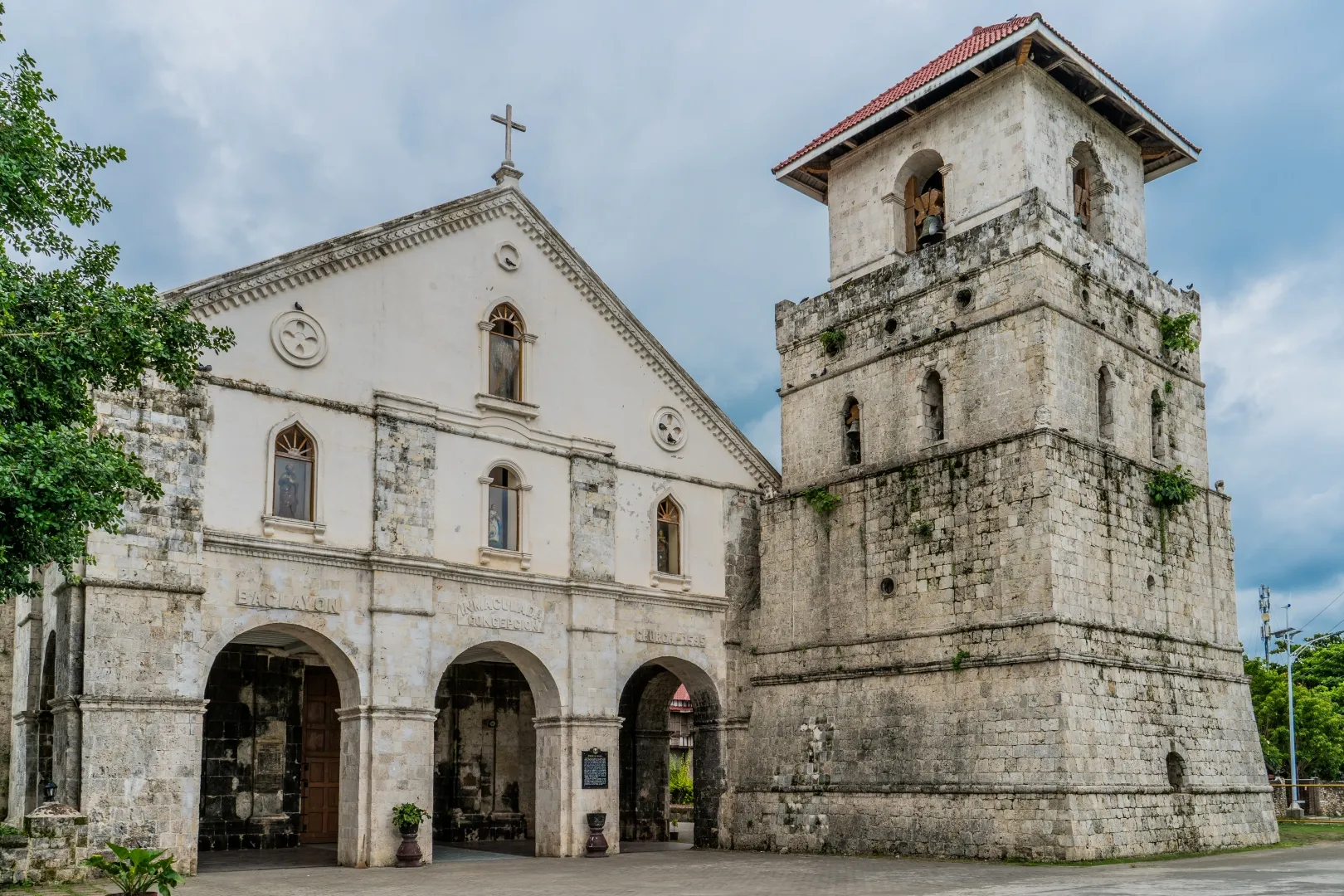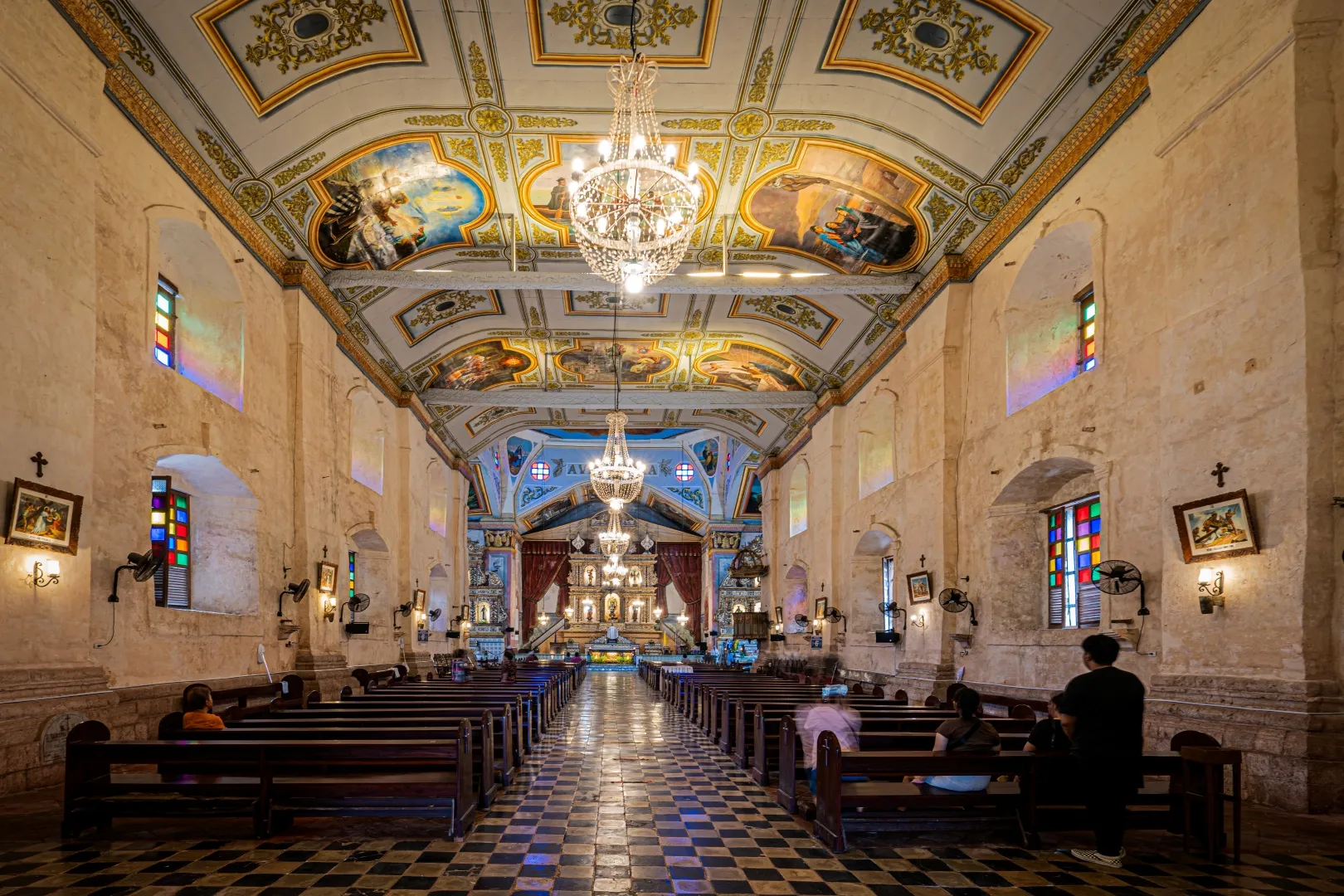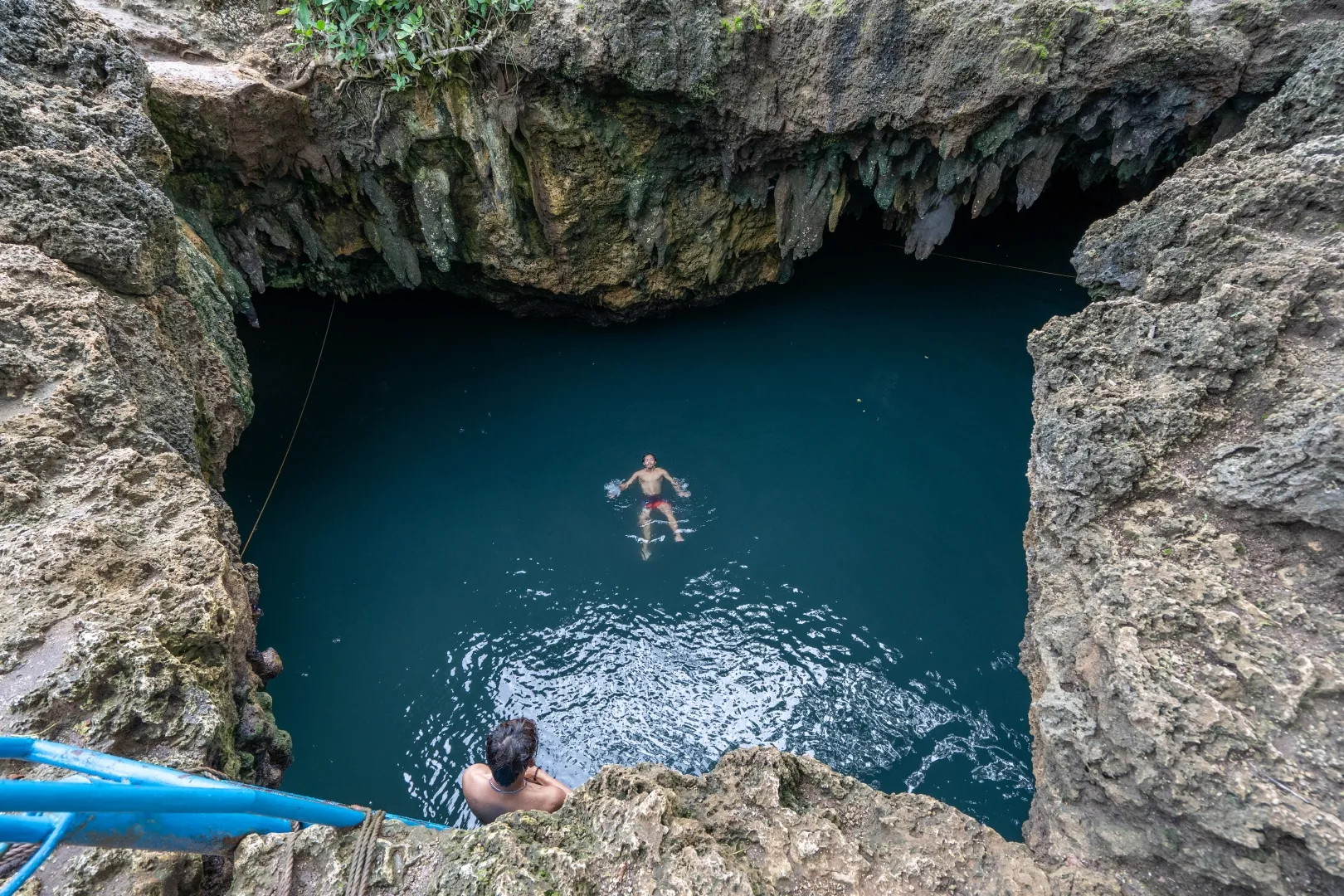Chocolate Hills
The unique karst landscape is composed of smooth, uniformly shaped conical isolated hills that cover a vast area in the central portion of the island. The site was once a platform of thick widespread buildup of coral reefs that thrived during the Pliocene, approximately 2-5 million years ago and later to form a sedimentary formation. Soon, this limestone formation was raised above the sea level and fractured. Rainwater, streams and groundwater dissolved the limestone, gradually forming the present landscape of cone karst.
Hinagdanan Cave
The Hinagdanan Cave is one of the many wondrous karst caves in the Province of Bohol. This cave was accidentally discovered by a farmer while clearing his land. Stumbling on a hole in the ground, curious, he dropped a stone and heard a splash. He built a ladder, “hagdan,” and went down to find the cave’s hidden beauty, hence the origin of its name Hinagdanan. Its boasts of several stalactite and stalagmite formations and a clear lagoon that is about 10 to 20 meters deep. Aside from its awe-inspiring natural beauty, Hinagdanan also played a significant role in the history of Bohol. The cave was used during Second World War as a hideout by locals to escape from the Japanese Imperial Army.
Loon Uplifted Marine Terrace (Coral Garden)
One of the shoreline areas uplifted during the earthquake of October 15, 2013 is the presently named Loon Coastal Geomorphic Conservation Park which covers an area of 417 hectares. This former intertidal zone, where the tide sometimes submerged or exposed the land, is now an uplifted terrace and completely on dry land. It was raised approximately 1.5 meters vertically and the shoreline shifted 50 meters seawards. The former barren land right after the earthquake is now teeming with sea purslane, a creeping succulent seagrass plant of the family Aizoaceae, that covers the land with a mat of red and orange color during sunny days, and a luxurious green color during rainy days. The locals call the area the Coral Garden, a popular new destination for tourists and residents alike.
Maribojoc Uplifted Marine Terrace
A 7.2-magnitude earthquake that rocked Bohol on October 15, 2013 brought devastation everywhere on the island and some nearby island provinces. The shaking was the result of a demonstration of nature’s power that has been changing the face of the Earth for millions of years: uplift of blocks of land during movement along a fault. This time the coastal areas of Loon-Maribojoc were pushed approximately 1.5 meters upwards when motion occured along a new fault in Inabanga. What was once a portion of the sea bottom and an underwater reef was now thrusted above sea level, creating a newly raised marine terrace and shifting the coastline 50 meters seaward. This is the Maribojoc Uplifted Marine Terrace. It is declared as the Loon-Maribojoc Geologic Monument by the Department of Environment and Natural Resources under the DENR Administrative Order No. 2015-08. The geological monument covers 1.37 kilometers (137 hectares) of uplifted coastline within the towns of Loon and Maribojoc.
Older marine terraces can also be found inland as part of the limestones of Maribojoc Formation. They too were a result of tectonic uplift in the not so distant geologic past, proof of the immense power of nature to create ever changing landscapes.
Can-Umantad Falls
Canawa Cold Spring
The spring is carved out of the Middle Miocene Carmen Formation comprised of 400 to 800 m thick calcareous sedimentary formation. Concrete walls and stairs were built on the spring entrance to be of help to those who cannot swim especially to the children, but the main part of the spring which is the circular pool, was kept in its natural state.
Baclayon Uplifted Marine Terrace
Fragments of large and thick shells (Tridacna gigas) and fragments of the gastropod group Strombaceae, have been collected in the area. Two terraces in Baclayon were tested using the Uranium-Thorium Analysis to identify the age and determine when the terraces were uplifted. The results point to an age of around 129,000 years old for the terrace with an altitude of 20 m, and approximately 310,000 years old for the terrace with an altitude of 60 m.
Danajon Bank Double Barrier Reef
Parallel to the northeast coast of Bohol is a very rare geological formation known as the Danajon Double Barrier Reef. It is one of the 6 double barrier reefs in the world, one of 3 in Indo-Pacific and is the only one of its kind in the Philippines and Southeast Asia. It is composed of numerous but diverse islets and reef patches joining together into an inner Calituban and outer Caubyan barrier reef. Because of its unique coral reef ecology, it is a major breeding ground and habitat of many different species of fishes, marine mammals, mollusks, and seagrasses.
Cagong-Cagong Cave System: Princess Manan-aw Cave
Inabanga Rupture Site
Alicia Schist
The Alicia Panoramic Park
Lamanok Island
Found in the easternmost tip of Anda is the Lamanok Island, which is underlain by massive to rubbly limestone deposits of the Late Miocene Sierra Bullones Formation. Prominent tidal notches can be observed around the edge of the island facing Bohol Sea showing dynamic movement of the sea during the Neogene Period. Large fossils such as giant shells protrude out of the limestone outcrops and cave walls. This section of the Anda Peninsula is also considered the seat of Bohol’s civilization as archaeological artifacts and burial sites of ancient settlers are preserved.
Baclayon Church
The church was founded by the first Spanish missionaries in the region, Jesuit priests Juan Torres and Gabriel Sanchez, when they first settled in Baclayon in 1596. There was no proper establishment available to conduct their missionary activities when they landed. They were able to convince the locals to build a church. That church became the oldest Christian settlement in Bohol. After completion of the building in 1727, an adjoining but separate tower was started under the supervision of the Jesuits, but was completed during the administration of the recollects in 1777. A large bell was added in 1835. And in 19th century, the Augustinian Recollects added a modern facade and stone buildings that surround the church.
In October 2013, the church was heavily damaged by a magnitude 7.2 strong earthquake. The church’s facade collapsed to the ground, as well as the bell tower. The church has not been used for official church meetings after the destruction, but the government conducted rehabilitation to restore the old building. It was reopened to the church-goers on February 27, 2018 after being closed for more than 4 years.
Cave Pools of Anda
The area is underlain by the Middle Miocene Anda Limestone belonging to the Sierra Bullones Limestone Formation. Years of dissolution and weathering of this limestone body resulted in karst features like these caves.
Visit Us
Bohol Environment Management Office, Lino Chatto Drive, Tagbilaran City, Bohol, Philippines
Call Us
(038) 411-1038
Local 41011
Email Us
geopark@bohol.gov.ph
Follow Us
FB: boholislandgeoparkph
IG: boholislandgeopark
X: boholgeopark

